If you’ve been curious about the “tech stack” phrase buzzing around, you’re not alone.
When building a loan lending platform, it’s easy to feel a bit overwhelmed with so many technological choices flying at you.
That’s where we come in.
We’re about to explore how selecting the Best tech stack for loan lending platform can simplify processes and speed up app development time.
You’ll gain insights into all the building blocks—from frontend frameworks to backend tools—to help you make informed decisions.
Ready to take a fresh look at how your platform can work smoothly? Let’s begin.
Stay tuned for a straightforward walkthrough of the vital pieces you need and how each one plays a part in delivering a pleasant experience to your users.
After all, a well-chosen Technology stack for loan lending platform can set you on the path toward a smooth launch and steady performance.
What Is a Tech Stack Exactly?
Think of a tech stack as a layered bundle of technologies programming languages, libraries, and frameworks that all work together to power your loan lending platform.
At its core, it’s like choosing the right parts for a vehicle. Each part has a specific job, and if one malfunctions, the entire ride can feel bumpy.
When we talk about the Technology stack for loan lending platform, we’re referring to every layer, from the interfaces (frontend) to the behind-the-scenes operations (backend) and beyond.
It’s all about creating a solid foundation so that your platform is ready to grow without hiccups.
And if you are planning to create a loan lending app, tech stack is very important concept to understand.
Loan Lending Tech Stack
Let’s shift gears and check out the nuts and bolts of your loan lending platform.
Below, you’ll find a super-detailed table featuring multiple options for each layer, along with short definitions.
This lineup helps you explore a Tech stack comparison for loan lending platform—from Frontend tech stack for loan lending platform options to Backend tech stack for loan lending platform choices, plus extra tools that keep everything running smoothly.
Tip: Keep an eye on how each technology might affect your app development time. Sometimes the most familiar tools can save you effort, while brand-new choices can shape a Modern tech stack for loan lending platform in fresh ways.
|
Layer |
Technology |
Description |
Key Features |
Why It Matters |
Use Cases |
Budget & Scalability |
|
Frontend |
React |
A JavaScript library by Facebook focused on building user interfaces with reusable components. |
Virtual DOM for efficient rendering - Large community & ecosystem - Great for single-page apps |
React is known for being flexible and modular. If you’re aiming for a Scalable tech stack for loan lending platform, React can simplify upgrades and code maintenance. |
Startup tech stack for loan lending platform: Quick prototyping - Interactive dashboards - Dynamic client portals |
- Generally cost-friendly due to open source - Easy to scale with the right architecture |
|
Angular |
A TypeScript-based framework by Google used to craft more structured web applications with built-in tools. |
,Two-way data binding, CLI for streamlined setup, Offers a complete solution (routing, testing, etc.) |
Angular is popular among teams who prefer an all-in-one approach. Perfect for an Enterprise tech stack for loan lending platform with complex, multi-module structures. |
Large enterprise portals, Banking or loan management dashboards, Multi-feature apps |
The framework is open source, Developer expertise may influence cost, Suited for sizable projects that require robust architecture |
|
|
Vue.js |
A progressive JavaScript framework that’s flexible and simpler to learn. |
Lightweight core, Two-way data binding, Incrementally adoptable (you can use it for a portion of your app) |
Vue.js is easy for smaller teams or those building a Startup tech stack for loan lending platform. It’s also a good fit if you want a Modern tech stack for loan lending platform that’s easy to expand without too many dependencies. |
Quick MVPs or proof-of-con, Evolving platforms, Community-driven projects |
Free to use (open source), Minimal overhead on hosting, Scales well when combined with modular design |
|
|
Backend |
Node.js |
A JavaScript runtime environment that uses an event-driven, non-blocking I/O model, allowing high concurrency. |
Uses JavaScript on the server side, Rich package ecosystem (NPM), Suited for real-time apps |
If you already use JavaScript for the frontend, Node.js simplifies full-stack development. Great for a Cloud-based tech stack for loan lending platform that needs fast updates. |
Real-time chats, Loan status trackers, Notification services |
Open source reduces license fees, Scales horizontally with microservices - Developer familiarity matters for time-saving |
|
Python (Django/Flask) |
Python is known for readability, plus Django and Flask are its main web frameworks. Django is full-featured; Flask is minimalistic. |
Django: - “Batteries-included” framework, Built-in ORM, Admin panel Flask:, Lightweight, Flexible structure, Easy to add extensions |
Python’s large set of libraries helps with data analysis, making it a good choice for an Agile development tech stack for loan lending platform with data-heavy tasks, like risk scoring and credit evaluations. |
Fraud detection & analytics, Automated underwriting processes, Data-driven loan approvals |
Both Django & Flask are open source, May require scaling with specialized hosting, Developer salaries vary based on experience |
|
|
Java (Spring Boot) |
A long-standing language with extensive community support. Spring Boot streamlines the setup for modern Java apps. |
Strong typing and robust libraries, Spring Boot auto-configuration, Enterprise-grade capabilities |
Java suits an Enterprise tech stack for loan lending platform thanks to reliability and performance. Spring Boot is helpful for microservices and faster startup times. |
Complex loan management systems, Corporate-level solutions - High-traffic applications |
Java is free; Spring Boot is open source, Might require advanced DevOps for large-scale traffic |
|
|
.NET Core |
Microsoft’s cross-platform framework for building high-performance applications using C#. |
Strong tooling in Visual Studio, Integrates easily with Azure, Suited for Windows environments |
Great for organizations tied to the Microsoft ecosystem or aiming to implement a Backend tech stack for loan lending platform that demands top-notch security. |
Loan servicing software, Windows-based infrastructures, Enterprise solutions |
Free, open-source core framework, Potential hosting costs on Windows servers, Straightforward scaling on Azure |
|
|
Databases |
MySQL |
A relational database known for reliability and wide usage. |
SQL-based, Well-documented, ACID-compliant |
If you’re looking at a Popular tech stack for loan lending platform, MySQL is often a top choice for structured data, such as user info, transaction logs, and financial records. |
Storing loan applications & user profiles, Managing transaction data |
Free and open source, Easy hosting on many platforms, Scales well for moderate loads |
|
PostgreSQL |
A powerful, open-source relational database that supports advanced data types and transactions. |
ACID-compliant, Handles complex queries - Extension-friendly (PostGIS, etc.) |
PostgreSQL can serve as a Comprehensive tech stack for loan lending platform when advanced queries or custom data types are needed, like storing user risk levels or detailed financial metrics. |
Complex financial analytics, Geographic-based loan data, High-read/write apps |
Free, open source - Scaling may require load balancing & partitioning, Strong community support |
|
|
MongoDB |
A NoSQL, document-oriented database where data is stored in flexible, JSON-like documents. |
Schema-less design, Suited for quick iterations, Horizontal scaling through sharding |
For a Startup tech stack for loan lending platform seeking speed, MongoDB can help store user profiles or logs that don’t follow a rigid schema. This is also handy for prototypes or agile updates. |
Storing unstructured or semi-structured data - Rapid feature additions, Analytics on large sets of documents |
Free community edition, Hosting can be done on major cloud providers - Sharding needed for huge data volumes |
|
|
Cassandra |
A NoSQL, distributed database noted for handling large, decentralized datasets with no single point of failure. |
Linear scalability, Designed for continuous availability, Suitable for massive write/read loads |
Cassandra is a go-to for a Scalable tech stack for loan lending platform with global user bases. It works well for high availability setups and real-time transaction data across multiple regions. |
Large-scale lending systems, Worldwide user data replication, Data centers across geographies |
Open source, Management can be tricky, so developer expertise counts, Often used by major enterprises that expect huge traffic |
|
|
Cloud & Hosting |
AWS (Amazon Web Services) |
A group of cloud services with global presence, offering everything from storage (S3) to compute (EC2) and databases (RDS). |
Elastic scaling, Pay-as-you-go, Diverse services (AI, analytics, etc.) |
A typical Cloud-based tech stack for loan lending platform uses AWS to manage spikes in demand. With many configuration choices, you can tailor your environment to fit both Enterprise tech stack for loan lending platform and smaller ventures. |
Global deployments, Load balancing for loan apps, Data backups in multiple regions |
Costs vary by usage, Quick to scale up or down, Familiarity with AWS is important for cost management |
|
Azure (Microsoft) |
Microsoft’s cloud platform offering integration with .NET, plus other services like Azure DevOps and AI solutions. |
Seamless .NET integration, Hybrid cloud options - Strong enterprise security |
If you’re already running .NET or have a Windows-based environment, Azure ties in nicely. Ideal if you want a Backend tech stack for loan lending platform that demands high compliance and identity management. |
Windows-focused deployments, Enterprise loan apps, Hybrid on-premises setups |
Licensing costs if you use Windows servers, Scales quickly for global reach, DevOps tools for continuous delivery |
|
|
GCP (Google Cloud) |
Google’s cloud services, known for strong data analytics capabilities and stable infrastructure. |
Excellent Big Data tools (BigQuery), Container support, Global network |
GCP pairs well with an Agile development tech stack for loan lending platform if you need top-tier analytics to process risk scoring, user behavior, or market trends quickly. |
Data-intensive loan analysis, Microservices via Kubernetes, Startups with a focus on analytics |
Costs depend on resources used, Easy to run containers, Good for scaling if you anticipate rapid user growth |
|
|
DevOps & CI/CD |
Jenkins |
An open-source automation server that helps automate build, test, and deployment. |
Plug-in ecosystem, Freestyle and pipeline jobs, Active community |
Jenkins can be the backbone of an Agile development tech stack for loan lending platform, letting you roll out updates promptly. |
Continuous integration, Automated testing, Deployment pipelines |
Free, open source, Resource usage depends on usage patterns, Works well with multiple environments |
|
GitLab CI |
Built into GitLab for source control, CI/CD, and collaboration. |
Integrated version control Automated pipelines, Code review and issue tracking |
If you prefer an all-in-one approach with version control and CI/CD in one place, GitLab CI is handy for quick iteration cycles, a big plus in a Startup tech stack for loan lending platform. |
Centralized code management, Automated merges and testing, Rapid feature releases |
Free for basic usage, Paid tiers for more advanced DevOps features, Scalable for large teams |
|
|
Docker |
A containerization platform that packages code and its dependencies to run consistently across environments. |
Lightweight virtual environments, Easy to share images, Consistent dev-to-prod experience |
Docker is part of a Modern tech stack for loan lending platform because it encourages microservices. You can isolate modules like payment gateways or user analytics for simpler updates. |
Microservices architecture, Fast environment setups - Versioned containers |
Free, open source engine, Minimal overhead, Scales well with orchestrators like Kubernetes |
|
|
Kubernetes |
A container orchestration system that automates deployment, scaling, and management of containerized apps. |
Auto-scaling, Rolling updates - Self-healing pods |
For a Scalable tech stack for loan lending platform, Kubernetes helps maintain performance even during traffic spikes. It’s also perfect if you want to split your app into smaller, independent services. |
Large-scale container management, Global deployments Efficient resource usage |
Open-source base, Hosted solutions on AWS EKS, GKE, Azure AKS - Some operational know-how needed |
|
|
Security |
OAuth / JWT |
Protocols and tokens for authentication and authorization. |
Safe login flows - Access tokens - Widely adopted standards |
Vital for protecting personal and financial data in a Technology stack for loan lending platform. Ensures that only verified users access sensitive operations (loan approvals, payments, etc.). |
Single sign-on, Token-based sessions, API security |
Mostly open standards, Minimal extra costs, Implement carefully for robust security |
|
HTTPS / SSL Certificates |
Encrypts data during transmission, preventing eavesdropping. |
Data encryption, Builds user confidence, Compliance-friendly |
A Custom tech stack for loan lending platform must feature SSL/TLS to secure user transactions and login details. Google also favors HTTPS in search rankings, boosting potential discoverability. |
All web-based interactions, Sensitive data exchange, Payment handling |
Certificates can be free (Let’s Encrypt) or paid, Implementation is straightforward, Mandatory for finance apps |
|
|
Encryption Libraries |
Tools like Bouncy Castle or OpenSSL that safeguard data at rest or in transit. |
Strong encryption algorithms, Support for multiple cryptographic operations, Integrations with frameworks |
FinTech apps rely on encryption for user data, loan records, and transaction details. Important to have for a How to choose a tech stack for loan lending platform conversation, ensuring no data leaks. |
Encrypting database fields Secure communication channels, Token generation |
Typically open source, Some require licensing for enterprise features - Integration complexity varies |
|
|
Payment Gateways |
Stripe |
A user-friendly solution for handling payments, supporting various methods (cards, wallets, etc.). |
Comprehensive APIs, Subscription management Fraud prevention tools |
Ideal for quick integration if you’re assembling a Popular tech stack for loan lending platform with minimal fuss. Stripe’s documentation is straightforward, saving app development time. |
Collecting loan repayments Splitting payments among multiple parties - Automatic invoicing |
Charges per transaction No monthly fees for basic usage Scales with volume |
|
PayPal |
A well-known, widely trusted payment platform. |
Global acceptance Built-in compliance Easy integration |
If your user base already uses PayPal, adding it to your loan lending platform can foster trust. Could be part of a Tech stack comparison for loan lending platform if you want multiple gateways. |
Quick pay buttons Loan disbursements International transactions |
Transaction-based fees Straightforward scaling for higher volumes Developer tools provided by PayPal |
|
|
Braintree |
A PayPal service offering flexible payment processing with advanced features like recurring billing and multiple currency support. |
Vaulting for payment info Recurring billing Wide currency support |
Braintree suits global projects or a Modern tech stack for loan lending platform that handles multiple payment models. Offers advanced customization for user experiences. |
Subscription-based loan services Multi currency transactions Integrated fraud tools |
Fees per transaction Integrates well with PayPal Scalable for worldwide usage |
This big overview should help you see the Tech stack comparison for loan lending platform from a bird’s-eye perspective.
Whether you go for an Open-source tech stack for loan lending platform or prefer a licensed approach, the main goal is to pick tools that align with your compliance needs, data flow, and growth strategy.
- If you want a no-frills approach and shorter app development time, you might pair Vue.js with Node.js and a simple database like MongoDB—a Startup tech stack for loan lending platform with minimal complexity.
- For an Enterprise tech stack for loan lending platform, you might lean toward .NET or Java for the backend, with Angular on the frontend and a robust SQL database like PostgreSQL.
The Cost of tech stack for loan lending platform varies based on cloud usage, licensing, and the size of your dev team.
Remember, the best approach is the one that balances security, speed, and future requirements.
Tech Stack Breakdown
When it comes to your loan lending platform, the final choice of technologies impacts performance, user trust, and how easily you can adapt down the road.
Ever heard the phrase “Don’t put all your eggs in one basket”?
Well, in this context, it means no single technology can do it all.
You often need a mix—a Comprehensive tech stack for loan lending platform—to balance speed, security, and growth.
Here’s all you need to know about tech stack, if you are planning to start a loan lending business.
1. Frontend Tech Stack
The frontend is like a friendly shop window for your loan lending service.
It greets users, shows them what’s available, and provides a place to get things done.
► React
-
- Strengths: Reusable components, large community, and quick updates through a virtual DOM.
- Why Pick It?: If your team knows JavaScript, React is a smooth route. It’s a favorite in a Startup tech stack for loan lending platform scenario because it scales well and helps you speed up app development time.
► Angular
-
-
- Strengths: A complete framework with routing, built-in modules, and TypeScript for more structured code.
- Why Pick It?: If you’re running a bigger team and want everything in one package, Angular can be a wise move. Many large institutions use Angular in an Enterprise tech stack for loan lending platform setup.
-
► Vue.js
-
- Strengths: Light on its feet, easy to learn, and good for quick prototypes.
- Why Pick It?: Vue often suits smaller teams or projects where you need to roll out features swiftly. It can also be a part of a Modern tech stack for loan lending platform aiming for minimal overhead.
Key Consideration: A stellar user interface reduces confusion and keeps borrowers from thinking twice before signing up. If your frontend feels clunky, people might “walk right past the shop” without stopping.
2. Backend Tech Stack
Once your customers fill out loan details, the backend takes over.
It handles data processing, approvals, rejections, and just about every step that happens out of sight.
► Node.js
-
- Reason to Use: Event-driven, so it’s built for real-time apps (think quick notifications or chat support).
- Common Pairings: Often combined with MongoDB for a JavaScript-only solution, making it a Scalable tech stack for loan lending platform that’s also easy to maintain.
► Python (Django/Flask)
-
- Reason to Use: If you’re crunching numbers or analyzing tons of data (like credit risk), Python’s ecosystem is full of libraries that handle math tasks with ease.
- Common Pairings: Django offers a ready-to-go environment with built-in security features, while Flask gives you the option to keep it lighter.
► Java (Spring Boot)
-
- Reason to Use: Many established banks and lenders still rely on Java for its reliability.
- Common Pairings: Spring Boot simplifies microservices, so it’s not as heavy as older Java setups. Perfect if you’re aiming for an Enterprise tech stack for loan lending platform that’ll stick around.
► NET Core
-
- Reason to Use: Ties easily into Microsoft tools and Azure. Known for strong security and performance across Windows environments.
- Common Pairings: Great if your organization already relies on Microsoft solutions. Could be a go-to for a Backend tech stack for loan lending platform needing Windows-based integrations.
Key Consideration: The backend is like an engine—powerful enough to haul your data but streamlined enough that you don’t end up paying big hosting costs or dealing with frequent slowdowns.
3. Databases
Imagine your data in neat rows and columns, or in flexible document structures.
A robust database ensures that user info, loan statuses, and transaction records never get tangled.
► MySQL / PostgreSQL
-
- What They Do: Both handle structured data gracefully and enforce relationships (helpful for user and loan IDs).
- Highlight: PostgreSQL offers advanced features for complex queries. MySQL is often simpler for smaller ventures.
► MongoDB
-
- What It Does: Stores data in flexible, JSON-like documents.
- Highlight: Ideal for a Startup tech stack for loan lending platform if you expect data fields to shift over time.
► Cassandra
-
- What It Does: Designed for massive, distributed datasets.
- Highlight: If your user base is worldwide, Cassandra can keep the lights on even if one region’s servers slow down.
Key Consideration: Data is the lifeblood of any lending platform. Making sure it’s easy to query, secure, and well-organized sets the stage for a smooth user experience.
4. DevOps & CI/CD
In the “old days,” developers wrote code, tested locally, and then scrambled to deploy.
Today, DevOps practices help you release updates regularly, fix glitches quicker, and maintain a stable app.
► Jenkins / GitLab CI
-
- Goal: Automate your testing, builds, and deployments so each new feature rolls out smoothly.
- Reason to Use: If you’re eyeing an Agile development tech stack for loan lending platform, these tools keep everyone on the same page.
► Docker
-
-
- Goal: Package your application and its dependencies in containers.
- Reason to Use: Containers ensure consistency, so if something runs well on your dev machine, it should run well in production to less guesswork.
-
► Kubernetes
-
- Goal: Manage and scale those containers.
- Reason to Use: If you expect spiky traffic (maybe around payday?), Kubernetes can auto-scale to handle surges gracefully.
Key Consideration: DevOps is more than fancy automation. It’s about building a cycle where features flow from idea to user’s hands rapidly without tripping wires.
5. Security
Loan lending involves sensitive data: personal info, credit checks, and financial records.
Protecting that data is non-negotiable.
► OAuth / JWT
-
- Purpose: Governs who can see or do specific actions in your platform.
- Value: If you want to share user data with partner services, OAuth sets the boundaries. Meanwhile, JWT keeps sessions secure without storing too much on the server.
► HTTPS / SSL Certificates
-
- Purpose: Encrypts the connection between your user’s browser and your server.
- Value: This is a must. Using a Cloud-based tech stack for loan lending platform? Enabling HTTPS is straightforward and boosts user confidence.
► Encryption Libraries
-
- Purpose: Lock down stored data so it remains unreadable to prying eyes.
- Value: Tools like Bouncy Castle or OpenSSL get integrated under the hood to guard user credentials and transaction histories.
Key Consideration: Data leaks can taint your reputation faster than you can blink. Make security central to your Complete tech stack for loan lending platform—not an afterthought.
6. Payment Gateways
Although a loan lending platform isn’t purely an online store, you’ll likely receive loan payments or offer payouts.
That’s where dedicated gateways come in.
► Stripe
-
- Why It Helps: Developer-friendly APIs for credit cards, digital wallets, and more.
- Extra Benefit: Offers advanced fraud protection and subscription tools, making it part of a Custom tech stack for loan lending platform if you have special payment logic.
► PayPal / Braintree
-
- Why They Help: Users already trust PayPal. With Braintree, you can also handle recurring payments or multiple currencies if you serve a global audience.
- Extra Benefit: Reduces time spent setting up a payment system from scratch, helping you cut app development time.
Key Consideration: Pick a gateway that meets your region’s compliance rules and user preferences. Some folks love PayPal, others prefer credit cards or localized e-wallets.
Putting all these puzzle pieces together results in a Tech stack comparison for loan lending platform that meets your needs for performance, security, and user experience.
How To Choose Tech Stack for Loan Lending Platform?
You’ve seen the big menu of technologies. Now the million-dollar question: How do you actually choose which pieces fit your loan lending platform best?
It’s not just about picking what’s “hot.”
You need a stack that aligns with your business size, user volume, compliance rules, and developer experience.
Below, we’ll go over some practical pointers to help you decide.
1. Identify Your Goals & Scale
Are you aiming for a small, Startup tech stack for loan lending platform that handles minimal volume?
Or do you see a future with thousands of simultaneous users, more suited for an Enterprise tech stack for loan lending platform?
► Small Team / MVP
-
- Lean toward simplicity. If your developers love JavaScript, consider Node.js + React with a document-oriented DB like MongoDB. This shortens app development time because everyone uses the same language.
- Keep a close eye on the Cost of tech stack for loan lending platform—a big plus of open-source tools is that you don’t pay licensing fees.
► Growing Business / Enterprise
-
-
- You might pick Angular or .NET to tap into robust frameworks and Microsoft integrations.
- If your data is large and varied, you might prefer Cassandra or PostgreSQL for reliability and advanced querying.
- Plan your Cloud-based tech stack for loan lending platform with AWS, Azure, or GCP for easy scaling.
-
2. Know Your Team’s Skills
Choosing the Best programming languages for loan lending platform often comes down to: “What does your team know well?”
► If your developers are fans of C#
-
- .NET Core might be your jam. It integrates nicely with Azure for a Custom tech stack for loan lending platform that scales without a fuss.
► If your team breathes JavaScript
-
- A full JS stack (React + Node.js) keeps things consistent front to back.
► If your crew loves Python
-
- Consider Django for its built-in admin panel and security features. Perfect for quickly building back-office tools to manage loans.
A Tech stack comparison for loan lending platform might look fantastic on paper, but if your devs can’t operate it smoothly, you’ll face hidden training and maintenance costs.
3. Think About Compliance & Security
Loan lending data can be sensitive.
So which technologies align well with your region’s regulations?
► Strict data rules?
-
- Tools like PostgreSQL or MySQL offer advanced encryption and row-level security.
- .NET on Azure can be configured to meet finance regulations with built-in compliance features.
► Global or cross-border
-
- Consider a Scalable tech stack for loan lending platform that uses Kubernetes. You can deploy your services in multiple regions, ensuring lower latency and compliance with local data residency laws.
Additionally, layering in OAuth and JWT for user identity helps you verify who’s allowed to see which parts of the platform.
4. Match Tools to Use Cases
Not all loan platforms are the same.
Your Modern tech stack for loan lending platform might be influenced by what you actually do:
► Short-Term Payday Loans
-
- High traffic, quick decisions, repeated smaller transactions. You might need a high-performance backend like Node.js or Java with Cassandra to handle surges.
► Long-Term Mortgages
-
- More complex forms, deeper data analysis. Python (Django) or .NET could be your friend, providing clarity for complex workflows and integrating with analytics libraries or third-party services.
► Peer-to-Peer Lending
-
- Real-time chat or negotiation between lenders and borrowers might require websockets. Node.js shines here, plus React or Vue for a snappy user interface.
► Business / SME Loans
-
- Potentially more compliance overhead. Enterprise tech stack for loan lending platform using Angular or .NET with advanced role-based access control.
5. Evaluate Hosting & Deployment
► On-Prem vs. Cloud
-
- On-prem might give you more control but also more responsibility for maintenance.
- A Cloud-based tech stack for loan lending platform (AWS, Azure, GCP) offers auto-scaling, often with pay-as-you-go pricing.
► Containerization
-
- Tools like Docker ensure your app works consistently across dev, staging, and production.
- Kubernetes automates scaling and recovery—crucial if you’re anticipating traffic spikes around certain dates (like paydays or loan deadlines).
6. Keep an Eye on Long-Term Costs
The Cost of tech stack for loan lending platform isn’t just about licenses or hosting.
It’s also about development time, maintenance overhead, and the cost of potential migration if you outgrow certain tools.
► Open-Source
-
- React, Angular, Vue, Node.js, Python, Java, PostgreSQL, MongoDB, Cassandra—these can be part of an Open-source tech stack for loan lending platform. You won’t pay licensing fees, but you’ll spend on skilled developers.
► Enterprise Solutions
-
- Some might require licensing or advanced support plans (like certain Microsoft or Oracle products). But that could be worthwhile if you need guaranteed uptime and expert vendor support.
7. Prototype & Test
“Measure twice, cut once” fits perfectly here.
Before locking in your choices, build a small proof-of-concept:
► Loan Application MVP
-
- Try out the chosen frontend and backend in a minimal environment. Let a few testers apply for test loans, see if the flow feels smooth.
► Performance Stress Test
-
- Simulate multiple users applying for a loan at the same time to check if your Frontend tech stack for loan lending platform and Backend tech stack for loan lending platform hold up.
Collect feedback, adjust as needed, and then scale up once you’re confident.
It’s far simpler to change course early than to rebuild the entire foundation later.
This interplay between comfort and cutting-edge shapes your Agile development tech stack for loan lending platform—ensuring you don’t get stuck in endless experiments while also avoiding stagnation..
JPLoft – Here To Help You
At JPLoft, we understand that building a loan lending platform is more than picking a few technologies.
It's about ensuring a smooth, user-friendly experience that also meets your security standards.
That’s why our experts remain dedicated to helping you piece together the best tech stack, from robust backend frameworks to a polished frontend interface.
As a leading loan lending app development company, we focus on every angle—from performance optimization to compliance measures.
We stay by your side at every step, streamlining processes so you can concentrate on your core offerings.
Let us handle the heavy lifting while you stay in total control.
Conclusion
Wondering if there’s a perfect formula for building a loan lending platform? Truth is, every project has its own shape and size.
You can go for a Modern tech stack for loan lending platform that blends Node.js with React and MongoDB, giving you speed and flexibility.
Or you might lean on Java or .NET for a more enterprise-ready Technology stack for loan lending platform.
No matter the road you pick, the app development time depends on how smoothly your tools fit together—and how comfortable your team is with them.
FAQs
This depends on your needs. If you want quick development with a small team, you might choose React + Node.js and a NoSQL database like MongoDB. For an enterprise tech stack for a loan lending platform, a combination of Angular or .NET with a robust SQL database (e.g., PostgreSQL) can help you manage bigger projects.
In short, there's no one-size-fits-all stack—it’s about balancing performance, security, cost, and your team’s expertise.
Plenty of options:
- JavaScript (Node.js): Great for full-stack use (frontend + backend in one language).
- Python: Popular for data-heavy work (risk scoring, analytics).
- Java: Tried-and-tested choice among established financial institutions.
- C# (.NET Core): Ties in nicely with Microsoft services and strong security protocols.
Aim for a language your team knows well and that aligns with your platform’s growth plans.
Open-source options (like React, Angular, Node.js, PostgreSQL, etc.) can lower costs and offer flexibility. Licensed solutions (like specialized .NET components) sometimes come with premium support or extra compliance features.
- Open-source works well for a Startup tech stack for loan lending platform or agile teams.
Licensed solutions can suit banks or large lenders needing official support and guaranteed patches
Cost includes:
- Licensing (if you go for enterprise or premium tools).
- Hosting (cloud services like AWS, Azure, or on-prem infrastructure).
- Developer Time (familiarity with the stack saves training hours).
- Scaling (more users = more computing and storage resources).
Take a close look at the balance between upfront expenses and ongoing operational fees. An Agile development tech stack for loan lending platform often uses pay-as-you-go cloud setups, which might be friendlier to evolving budgets.
Pick tools known for handling traffic spikes. For instance:
- Node.js or Java on the backend.
- A database that can handle horizontal scaling (like Cassandra or MongoDB).
- Container-based deployments with Kubernetes to quickly add more computing resources.
If you expect a significant jump in user numbers or you’re targeting multiple regions, a Cloud-based tech stack for loan lending platform offers global scaling capabilities.
- Custom: If you have very specific workflows (e.g., unique underwriting logic, specialized security needs), you might need custom integrations.
- Popular: If your requirements aren’t as specialized, mainstream solutions (like React, MySQL, etc.) are easier to set up and often have lots of online resources and community support.
In many cases, you can blend both approaches—use popular frameworks, then fine-tune them for your platform’s quirks.
Some common combos:
- React + Node.js: A unified JavaScript environment for smooth development.
- Angular + Java: Ideal for enterprise-level apps with structured modules.
- Vue + Python: Flexible, great if you’re doing frequent prototypes or updates.
- NET Core + Angular: Strong synergy if you’re already in the Microsoft ecosystem.
Go with the one that best aligns with your project’s complexity and your dev team’s comfort zone.
- Microservices with container orchestration (Docker + Kubernetes)
- Serverless computing for certain functions (on AWS Lambda or Azure Functions)
- AI/ML integration for risk analysis (Python-based libraries are popular here)
- Cloud-based deployments for on-demand scalability
- RESTful APIs or GraphQL for simpler third-party integrations
These trends help build a Modern tech stack for loan lending platform that’s easy to scale and maintain.
- Define Your Goals (user volume, features, compliance).
- Check Team Skills (which languages do they know?).
- Weigh Security & Compliance (some stacks are simpler to secure).
- Prototype on a small scale.
- Evaluate Costs (hosting, licensing, developer time).
- Plan for Growth (pick a Scalable tech stack for loan lending platform).
Sticking to this list can prevent a headache when your app grows beyond early expectations.
Yes—but it can be tedious. If you foresee growth, pick a comprehensive tech stack for a loan lending platform from day one. That said, many companies gradually migrate certain parts to new technologies (e.g., rolling out microservices while keeping an original monolith in place).





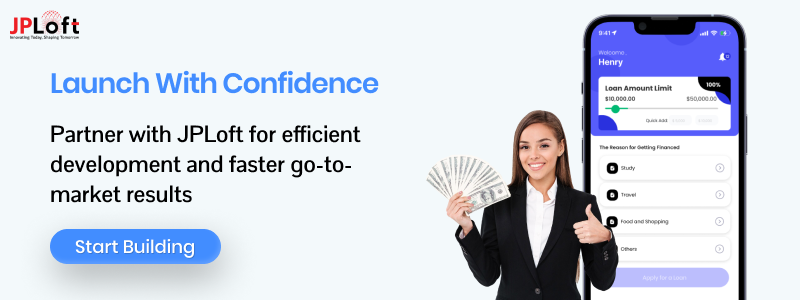

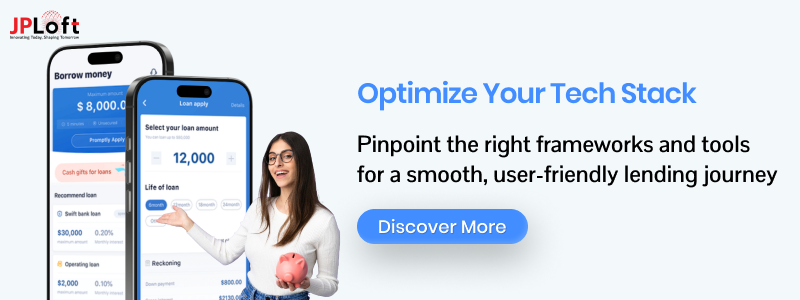

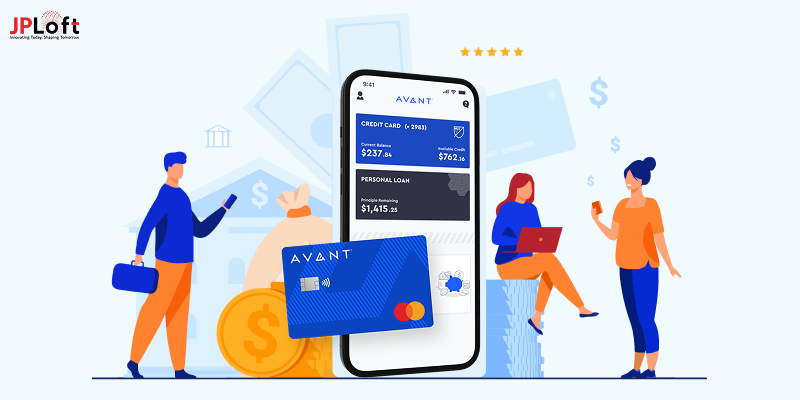
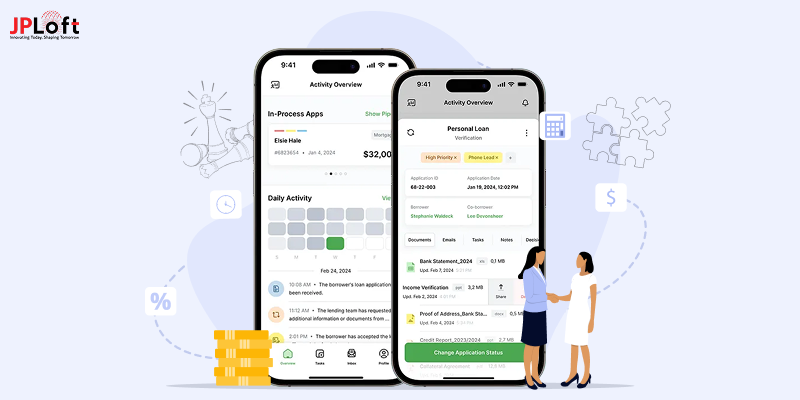
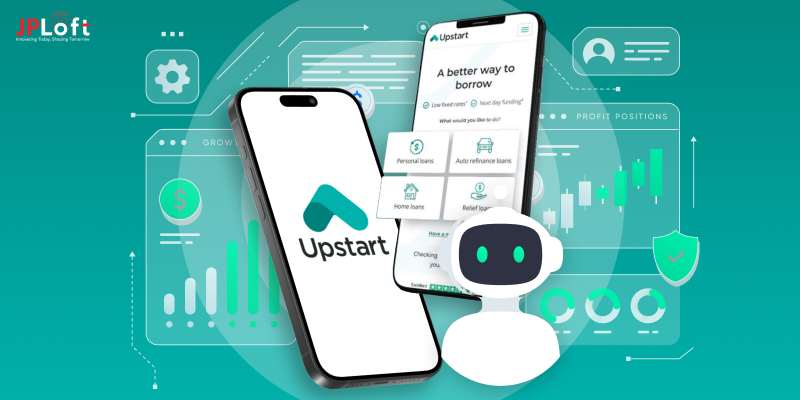


Share this blog